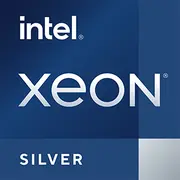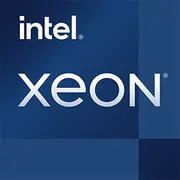Vantaggi
- Più alto Processo di fabbricazione: 14 nm (14 nm vs 22 nm)
- Più alto Tipi di memoria: DDR4-2400 (DDR4-2400 vs DDR3)
- Più nuovo Data di rilascio: January 2020 (January 2020 vs September 2013)
Di base
Intel
Nome dell'etichetta
Intel
January 2020
Data di rilascio
September 2013
Server
Piattaforma
Server
4210R
Nome del modello
?
Il numero del processore Intel è solo uno dei numerosi fattori, insieme alla marca del processore, alle configurazioni di sistema e ai benchmark a livello di sistema, da considerare quando si sceglie il processore giusto per le proprie esigenze informatiche.
Xeon E5-2680 v2
Cascade Lake X
Nome in codice
Ivy Bridge-EP
-
Fonderia
Intel
-
Generazione
Xeon E5 (Ivy Bridge-EP)
Specifiche della CPU
10
Conteggio totale dei core
?
Core è un termine hardware che descrive il numero di unità di elaborazione centrale indipendenti in un singolo componente informatico (die o chip).
10
20
Conteggio totale dei thread
?
Ove applicabile, la tecnologia Intel® Hyper-Threading è disponibile solo sui core Performance.
20
2.40 GHz
Frequenza di base
-
3.20 GHz
Frequenza turbo massima
?
La frequenza Turbo massima è la frequenza single-core massima alla quale il processore è in grado di funzionare utilizzando la tecnologia Intel® Turbo Boost e, se presente, la tecnologia Intel® Turbo Boost Max 3.0 e Intel® Thermal Velocity Boost. La frequenza viene generalmente misurata in gigahertz (GHz) o miliardi di cicli al secondo.
-
-
Frequenza base del core di performance
2.8 GHz
-
Frequenza turbo del core di performance
?
Massima frequenza turbo P-core derivata dalla tecnologia Intel® Turbo Boost.
3.6 GHz
Yes
Intel Hyper-Threading Technology
?
Intel® Hyper-Threading Technology (Intel® HT Technology) delivers two processing threads per physical core. Highly threaded applications can get more work done in parallel, completing tasks sooner.
-
No
Intel Turbo Boost Max Technology 3.0
?
Intel® Turbo Boost Max Technology 3.0 identifies the best performing core(s) on a processor and provides increased performance on those cores through increasing frequency as needed by taking advantage of power and thermal headroom.
-
2.0
Intel Turbo Boost Technology
?
Intel® Turbo Boost Technology dynamically increases the processor's frequency as needed by taking advantage of thermal and power headroom to give you a burst of speed when you need it, and increased energy efficiency when you don’t.
-
-
Cache L1
64K per core
-
Cache L2
256K per core
-
Cache L3
25MB shared
-
Frequenza del bus
100MHz
-
Moltiplicatore
28.0
-
Moltiplicatore sbloccato
No
FCLGA3647
Socket
?
Il socket è il componente che fornisce i collegamenti meccanici ed elettrici tra il processore e la scheda madre.
Intel Socket 2011
14 nm
Processo di fabbricazione
?
La litografia si riferisce alla tecnologia dei semiconduttori utilizzata per produrre un circuito integrato ed è espressa in nanometri (nm), indicativi della dimensione delle caratteristiche integrate nel semiconduttore.
22 nm
100 W
Consumo di energia
115 W
-
Versione PCIe
?
PCI Express è uno standard di bus di espansione seriale ad alta velocità utilizzato per connettere componenti ad alta velocità, sostituendo standard più vecchi come AGP, PCI, e PCI-X. Ha subito diverse revisioni e miglioramenti dal suo rilascio iniziale. PCIe 1.0 è stato introdotto per la prima volta nel 2002, e per soddisfare la crescente domanda di maggiore larghezza di banda, sono state rilasciate versioni successive nel corso del tempo.
3
3.0
Versione PCI Express
?
PCI Express Revision è la versione supportata dello standard PCI Express. Peripheral Component Interconnect Express (o PCIe) è uno standard di bus di espansione per computer seriale ad alta velocità per il collegamento di dispositivi hardware a un computer. Le diverse versioni PCI Express supportano velocità dati diverse.
-
48
Numero di corsie PCI Express
?
Una corsia PCI Express (PCIe) è composta da due coppie di segnalazione differenziali, una per la ricezione dei dati, una per la trasmissione dei dati, ed è l'unità di base del bus PCIe. Il numero massimo di corsie PCI Express è il numero totale di corsie supportate.
-
Yes
Intel 64
?
Intel® 64 architecture delivers 64-bit computing on server, workstation, desktop and mobile platforms when combined with supporting software.¹ Intel 64 architecture improves performance by allowing systems to address more than 4 GB of both virtual and physical memory.
-
-
Conteggio dei transistor
1.4 billions
Specifiche della memoria
DDR4-2400
Tipi di memoria
?
I processori Intel® sono disponibili in quattro diversi tipi: canale singolo, doppio canale, triplo canale e modalità Flex. La velocità massima della memoria supportata potrebbe essere inferiore quando si popolano più DIMM per canale su prodotti che supportano più canali di memoria.
DDR3
1 TB
Dimensione massima della memoria
?
La dimensione massima della memoria si riferisce alla capacità di memoria massima supportata dal processore.
-
6
Canali di memoria massimi
?
Il numero di canali di memoria si riferisce al funzionamento della larghezza di banda per l'applicazione del mondo reale.
4
2400 MHz
Maximum Memory Speed
-
Yes
ECC Memory Supported
?
ECC Memory Supported indicates processor support for Error-Correcting Code memory. ECC memory is a type of system memory that can detect and correct common kinds of internal data corruption. Note that ECC memory support requires both processor and chipset support.
-
-
Supporto memoria ECC
Yes
Specifiche della GPU
-
Grafica integrata
?
Una GPU integrata si riferisce al core grafico integrato nel processore CPU. Sfruttando le potenti capacità di calcolo del processore e la gestione intelligente dell'efficienza energetica, offre prestazioni grafiche eccezionali e un'esperienza applicativa fluida con un consumo energetico inferiore.
N/A
Varie
Yes
Intel Deep Learning Boost (Intel DL Boost) sulla CPU
?
Una nuova serie di tecnologie di processore integrate progettate per accelerare i casi d'uso del deep learning dell'intelligenza artificiale. Estende Intel AVX-512 con una nuova Vector Neural Network Instruction (VNNI) che aumenta significativamente le prestazioni di inferenza del deep learning rispetto alle generazioni precedenti.
-
Yes
Intel Virtualization Technology (VT-x)
?
Intel® Virtualization Technology (VT-x) allows one hardware platform to function as multiple “virtual” platforms. It offers improved manageability by limiting downtime and maintaining productivity by isolating computing activities into separate partitions.
-
Yes
Intel Virtualization Technology for Directed I/O (VT-d)
?
Intel® Virtualization Technology for Directed I/O (VT-d) continues from the existing support for IA-32 (VT-x) and Itanium® processor (VT-i) virtualization adding new support for I/O-device virtualization. Intel VT-d can help end users improve security and reliability of the systems and also improve performance of I/O devices in virtualized environments.
-
Intel® SSE4.2 | Intel® AVX | Intel® AVX2 | Intel® AVX-512
Intel Standard Manageability (ISM)
?
Intel® Standard Manageability is the manageability solution for Intel vPro® Essentials platforms and is a subset of Intel® AMT with out-of-band management over Ethernet and Wi-Fi, but no KVM or new life cycle management features.
-
1
Number of AVX-512 FMA Units
-
Yes
Enhanced Intel SpeedStep Technology
?
Enhanced Intel SpeedStep® Technology is an advanced means of enabling high performance while meeting the power-conservation needs of mobile systems. Conventional Intel SpeedStep® Technology switches both voltage and frequency in tandem between high and low levels in response to processor load. Enhanced Intel SpeedStep® Technology builds upon that architecture using design strategies such as Separation between Voltage and Frequency Changes, and Clock Partitioning and Recovery.
-
Yes
Execute Disable Bit
?
Execute Disable Bit is a hardware-based security feature that can reduce exposure to viruses and malicious-code attacks and prevent harmful software from executing and propagating on the server or network.
-
13.75 MB
Cache
?
CPU Cache is an area of fast memory located on the processor. Intel® Smart Cache refers to the architecture that allows all cores to dynamically share access to the last level cache.
-
Yes
Intel AES New Instructions
?
Intel® AES New Instructions (Intel® AES-NI) are a set of instructions that enable fast and secure data encryption and decryption. AES-NI are valuable for a wide range of cryptographic applications, for example: applications that perform bulk encryption/decryption, authentication, random number generation, and authenticated encryption.
-
Yes
Intel Volume Management Device (VMD)
?
Intel® Volume Management Device (VMD) provides a common, robust method of hot plug and LED management for NVMe-based solid state drives.
-
Yes
Intel VT-x with Extended Page Tables (EPT)
?
Intel® VT-x with Extended Page Tables (EPT), also known as Second Level Address Translation (SLAT), provides acceleration for memory intensive virtualized applications. Extended Page Tables in Intel® Virtualization Technology platforms reduces the memory and power overhead costs and increases battery life through hardware optimization of page table management.
-
Classifiche
Geekbench 6 Singolo Core
Xeon Silver 4210R
859
+33%
Xeon E5-2680 v2
646
Geekbench 6 Multi Core
Xeon Silver 4210R
3985
Xeon E5-2680 v2
4147
+4%
Geekbench 5 Singolo Core
Xeon Silver 4210R
785
+53%
Xeon E5-2680 v2
514
Geekbench 5 Multi Core
Xeon Silver 4210R
3226
+203%
Xeon E5-2680 v2
1066
Passmark CPU Singolo Core
Xeon Silver 4210R
1803
+1%
Xeon E5-2680 v2
1785
Passmark CPU Multi Core
Xeon Silver 4210R
15089
+20%
Xeon E5-2680 v2
12605
Condividi sui social media
Oppure linkaci
<a href="https://cputronic.com/it/cpu/compare/intel-xeon-silver-4210r-vs-intel-xeon-e5-2680-v2" target="_blank">Intel Xeon Silver 4210R vs Intel Xeon E5-2680 v2</a>

